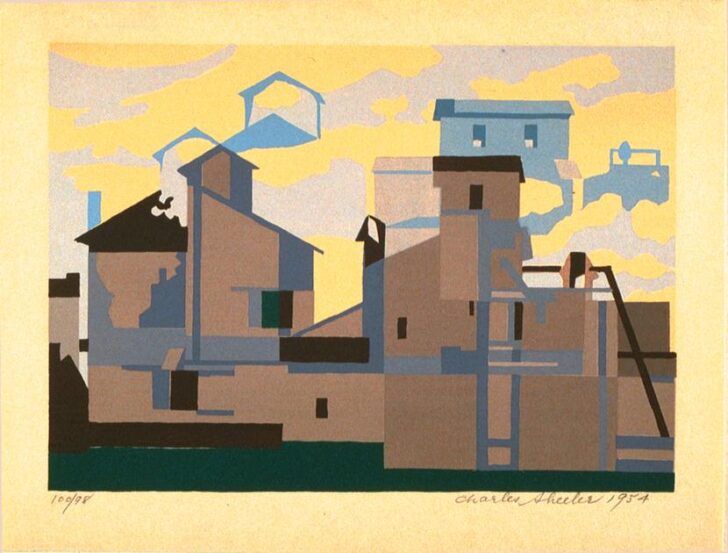Architectural Cadences
Charles Sheeler

Description
Born in Philadelphia, Charles Sheeler studied painting at the Philadelphia Academy of Fine Art with William Merritt Chase at the beginning of the twentieth century. He presented six canvases in the landmark Armory Show in New York in 1913, all of which show the influence of French artist Paul Cézanne. In 1918, he moved to New York and worked with photographer Paul Strand on the film Manhatta. Working as a photographer for Condé Nast Publications, he completed significant photographic surveys of the Ford Motor Company's River Rouge Plant (1927) and Chartres Cathedral near Paris (1929). Originally Sheeler found inspiration for his paintings in the lean elegance of Shaker crafts and design but later in his career, he shifted toward contemporary industrial and architectural landscapes.
Sheeler's printmaking activity was slight but noteworthy. He made his first lithographs in 1918, but Architectural Cadences is the artist's only serigraph, his only color print, and his final experiment with printmaking. The idea for this work came as a catalogue accompaniment for an exhibition of Sheeler's work at the Art Gallery of the University of California, Los Angeles, in 1954. This print reproduces an oil painting of the same title, now in the collection of the Whitney Museum of American Art in New York. Although Sheeler may have initially developed this image from observation, his simplified shapes and schematized space shifted the image to a geometric dance of color and form. The range of colors in the print were more restricted than in the painting, and the image became all the more abstracted and remote from naturalism.
Sean M. Ulmer, University Curator of Modern and Contemporary Art, for "A Matter of Degree: Abstraction in Twentieth-Century Art," November 10, 2001 - January 27, 2002
Subject Matter:
According to Mark Rawlinson's book, Charles Sheeler: Modernism, Precisionism and the Borders of Abstraction, Sheeler's work after 1943 was thought to return to a simplified realism that he pursued in his early career. Sheeler began to consistently rework old themes, a trend that many critics saw as a decline in his talent. During this later period in his work, Sheeler would sift through various images and forms that he already knew and produce new and sometimes awkward compositions through a layering and combining of this past content. The layering of this work by Sheeler demonstrates a possible combining of various architectural forms he had worked with in the past.
Physical Description:
Multiple color screenprint of an abstracted industrial landscape. In the foreground is a small strip of land, and in the middle ground are buildings of various geometric shapes and sizes. In the background, the rooflines of the buildings start to blend in and emerge from the cloudy sky.
Usage Rights:
If you are interested in using an image for a publication, please visit https://umma.umich.edu/request-image/ for more information and to fill out the online Image Rights and Reproductions Request Form.